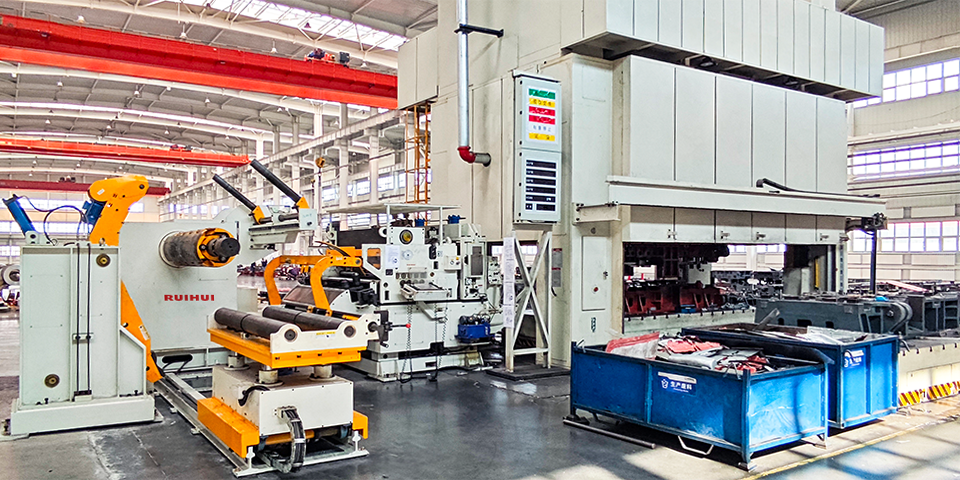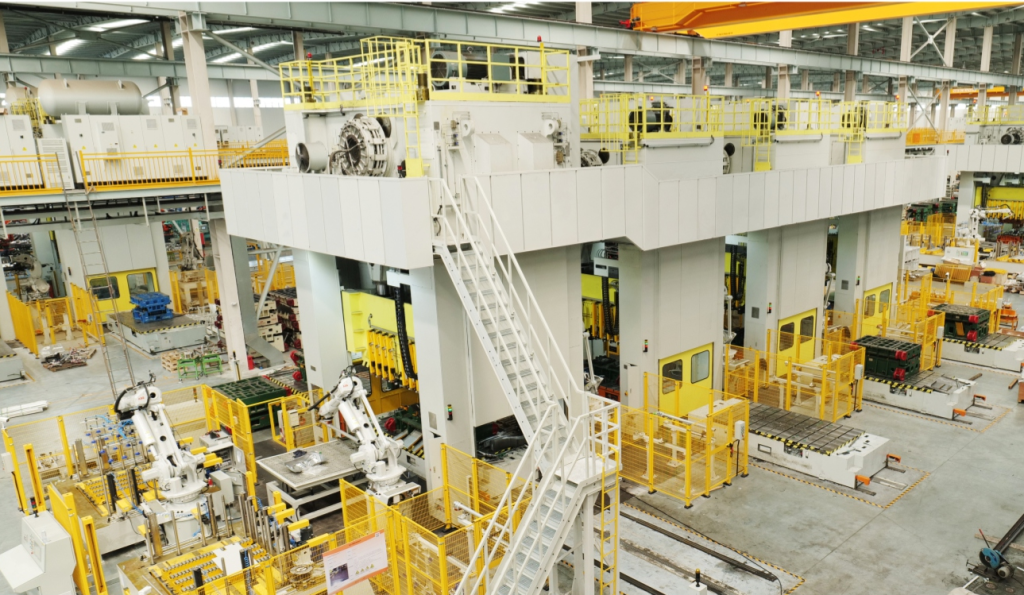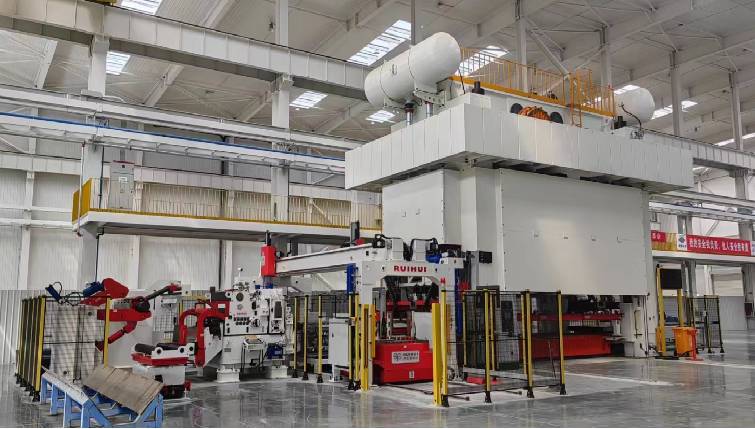Progressive Die Feeding Line
The progressive die feeding line is a specialized equipment used for metal coil stamping or blanking, featuring three major functions: uncoiling, leveling, and feeding. It can automatically complete the loading, uncoiling, guiding, leveling, and feeding of coil materials. It is durable, easy to operate, and space-saving.
Features
1. High production speed, typically over 30 spm (strokes per minute);
2. Easy to automate with minimal footprint;
3. Simple and safe operation;
4. Long service life of equipment;
5. Lower material utilization with high waste generation;
6. Not suitable for deep drawing applications due to structural limitations.

Robot Transfer Tandem Line
The robot transfer tandem line consists of multiple presses coupled with robots to form a tandem production line. Sheet materials are transferred from the destacking unit and stamped by robots, with finished parts placed onto a conveyor belt at the end of the line. It offers continuous production, intelligent detection, and precise conveying.
Features
1. Wide application range, suitable for large stamping parts;
2. High flexibility of the entire line, ideal for small-batch and multi-type production;
3. Large production plant area required;
4. High investment in presses, foundations, and automation;
5. Low production efficiency (8-14 spm);
6. High energy consumption in multi-press connected production, with no particular advantage for small-part stamping.

Compound 3-Axis Transfer Stamping Line
The compound 3-axis transfer stamping line comprises a straightener feeder, shearing machine, truss-type destacker, 3-axis transfer, press, belt conveyor line, safety protection system, and industrial control safety system, forming a composite multi-mode production line. It improves press utilization and meets the demands of complex product structures.
Features
1. Multiple production modes, supporting both coil and blank sheet processing;
2. Production speed lower than progressive die feeding lines but higher than tandem lines;
3. High degree of automation, with mature applications in die changing, sheet detection, double-sheet detection, and in-die sensing;
4. Lower investment cost compared to tandem lines, utilizing multiple dies in conjunction with high-tonnage presses;
5. Automated stamping production can be achieved with minimal manual input;
6. Reduction in human-induced losses of personnel, equipment, and products;
7. Improves material utilization rate and reduces scrap cost.

Selection Criteria
High Speed
For products with simple structures and stable output, choose a progressive die feeding line with high speed and small footprint.
High Flexibility
For complex parts with high process requirements, choose a robot transfer tandem line with high overall flexibility.
High Output
For large production volumes, choose a compound 3-axis transfer stamping line with high efficiency and output.

